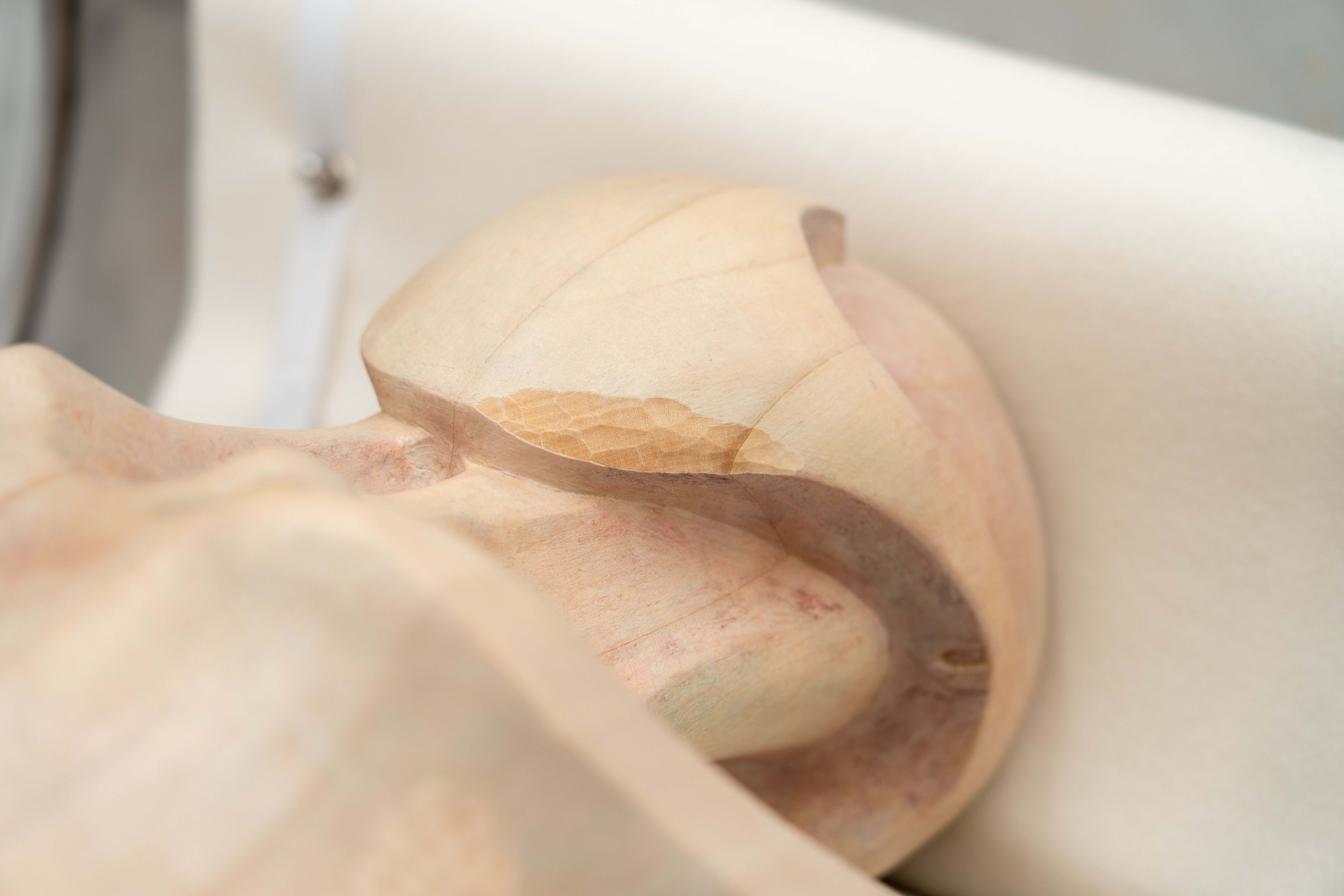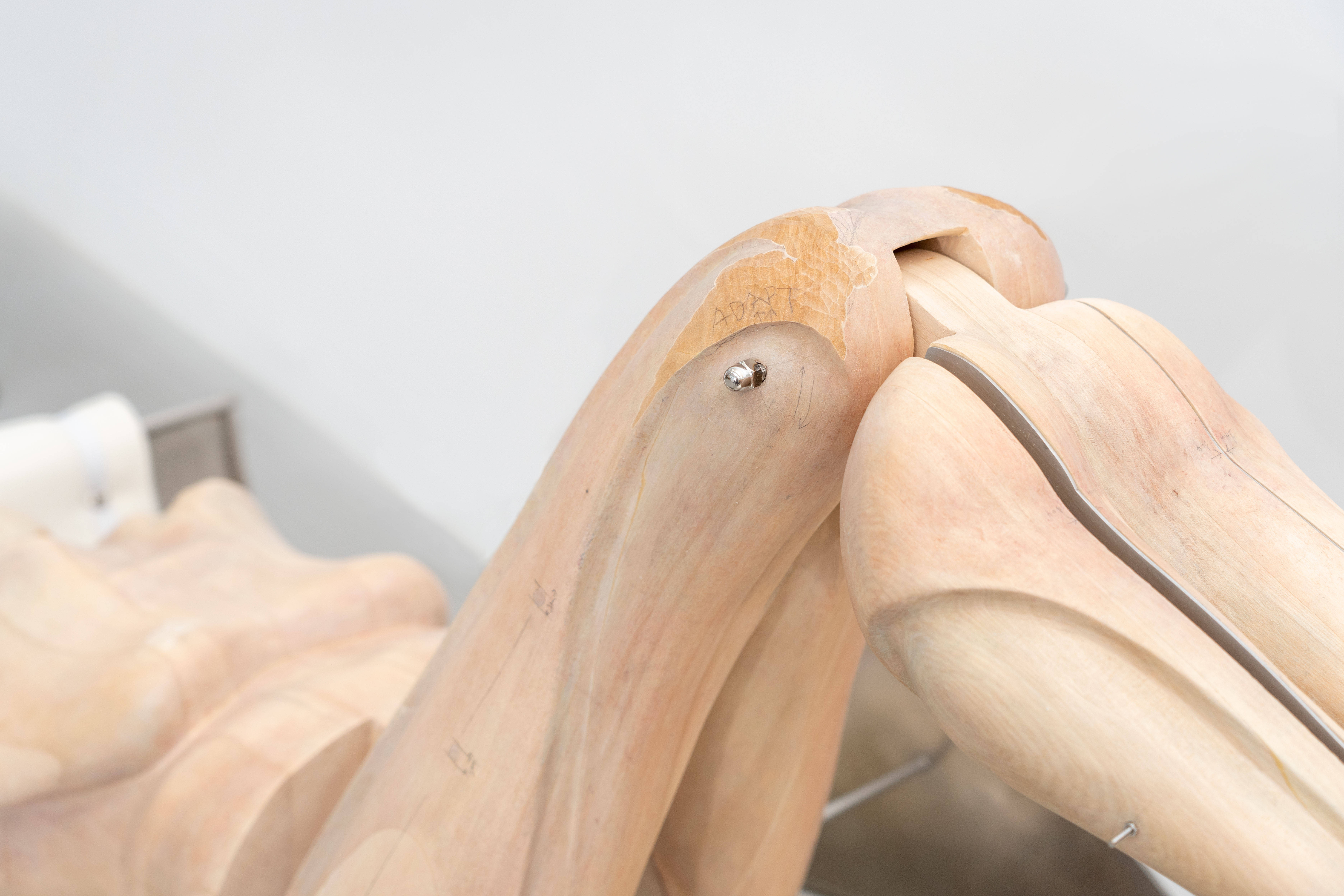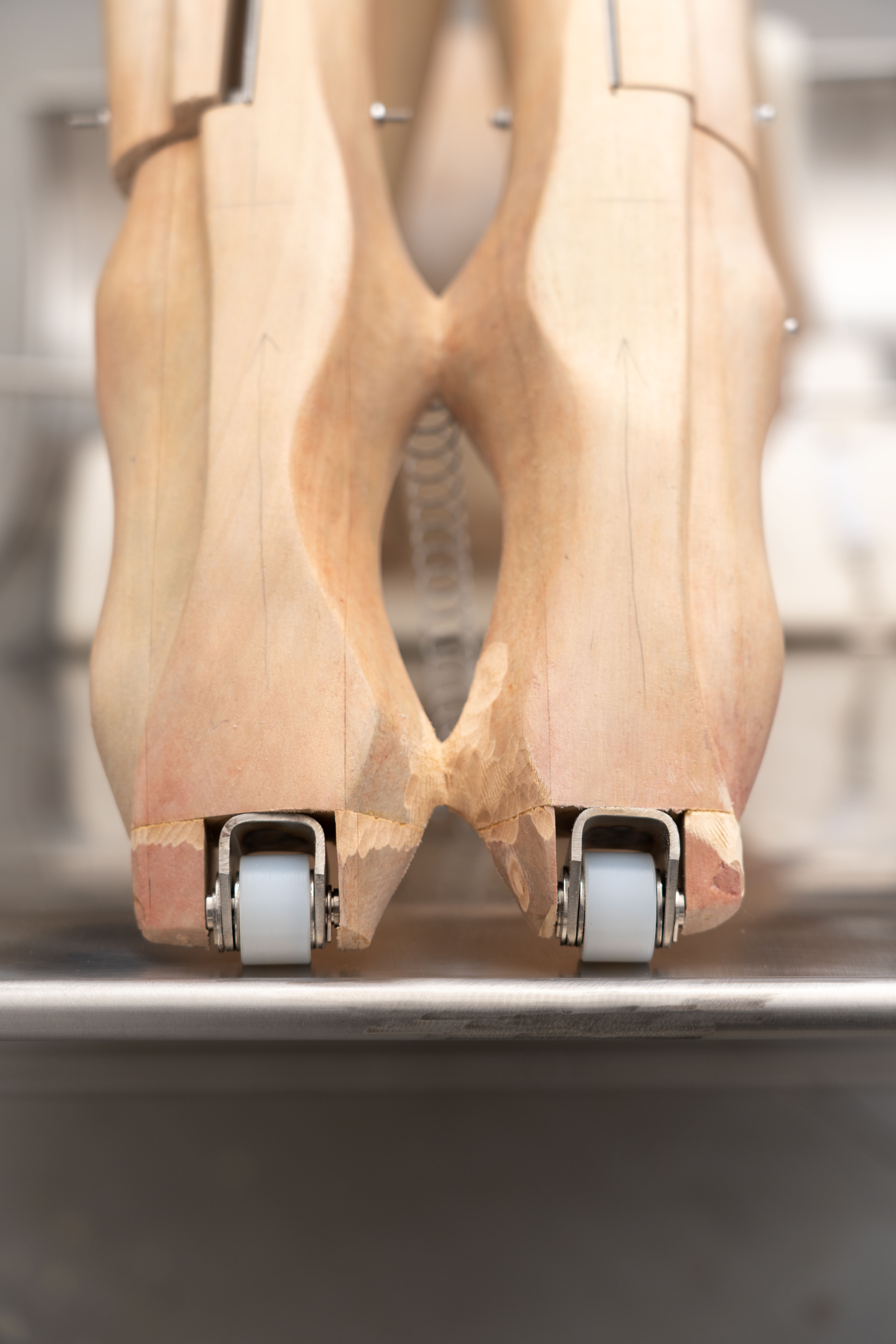Wanderer is inspired by the lightweight, body-molded wooden splints
designed by American designers Charles Eames and Ray Eames for injured soldiers during World War II. The sculpture features a human figure lying on a wheelbarrow, with its legs springing back upon external
impact—mirroring the instinctive reaction of bending one's knees toward
the torso when falling backward. The artist reflects on the interaction and
negotiation between the human body and its surrounding facilities, particularly the marginalized visibility of individuals with limited mobility in
public spaces, while also contemplating the sense of displacement associated with shifting identities. Visitors are invited to push
Wanderer to proceed on their way; and it is precisely this interaction that
transforms the work into an entity capable of freely traversing the space,
wandering beyond the confines of systemic rules.

![]()
![]()
![]()
![]()
![]()
![]()
![]()






